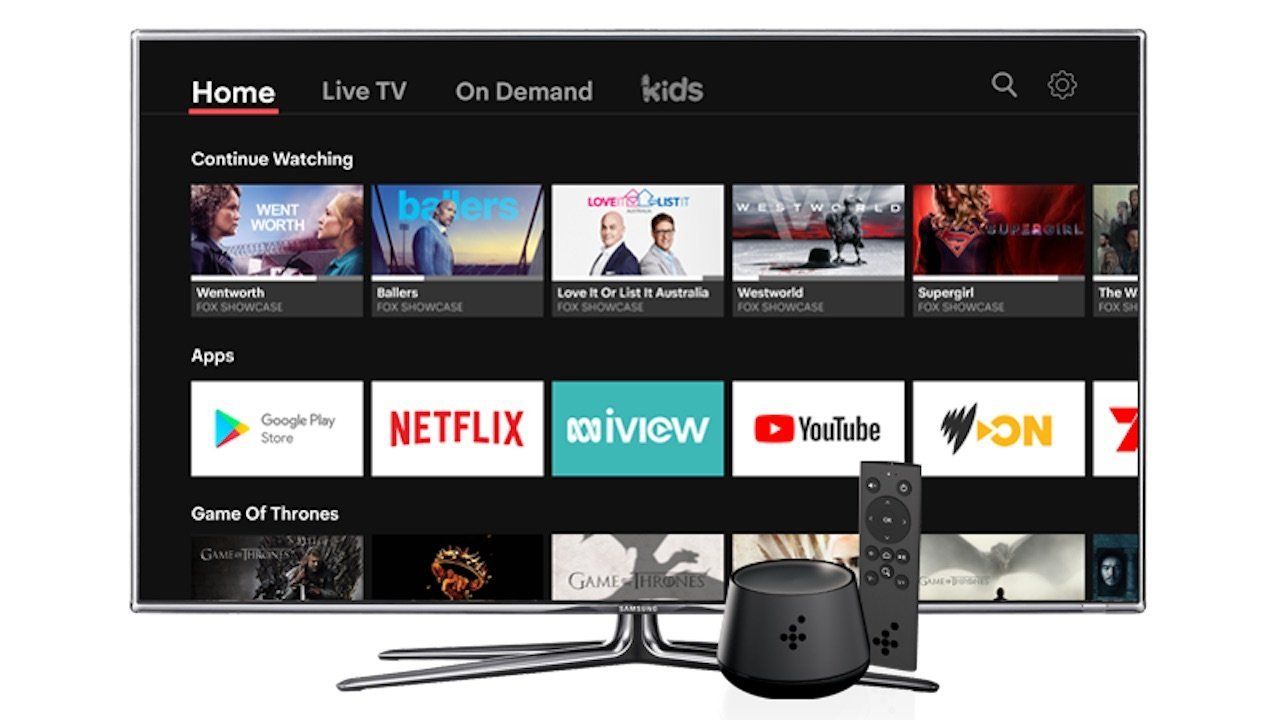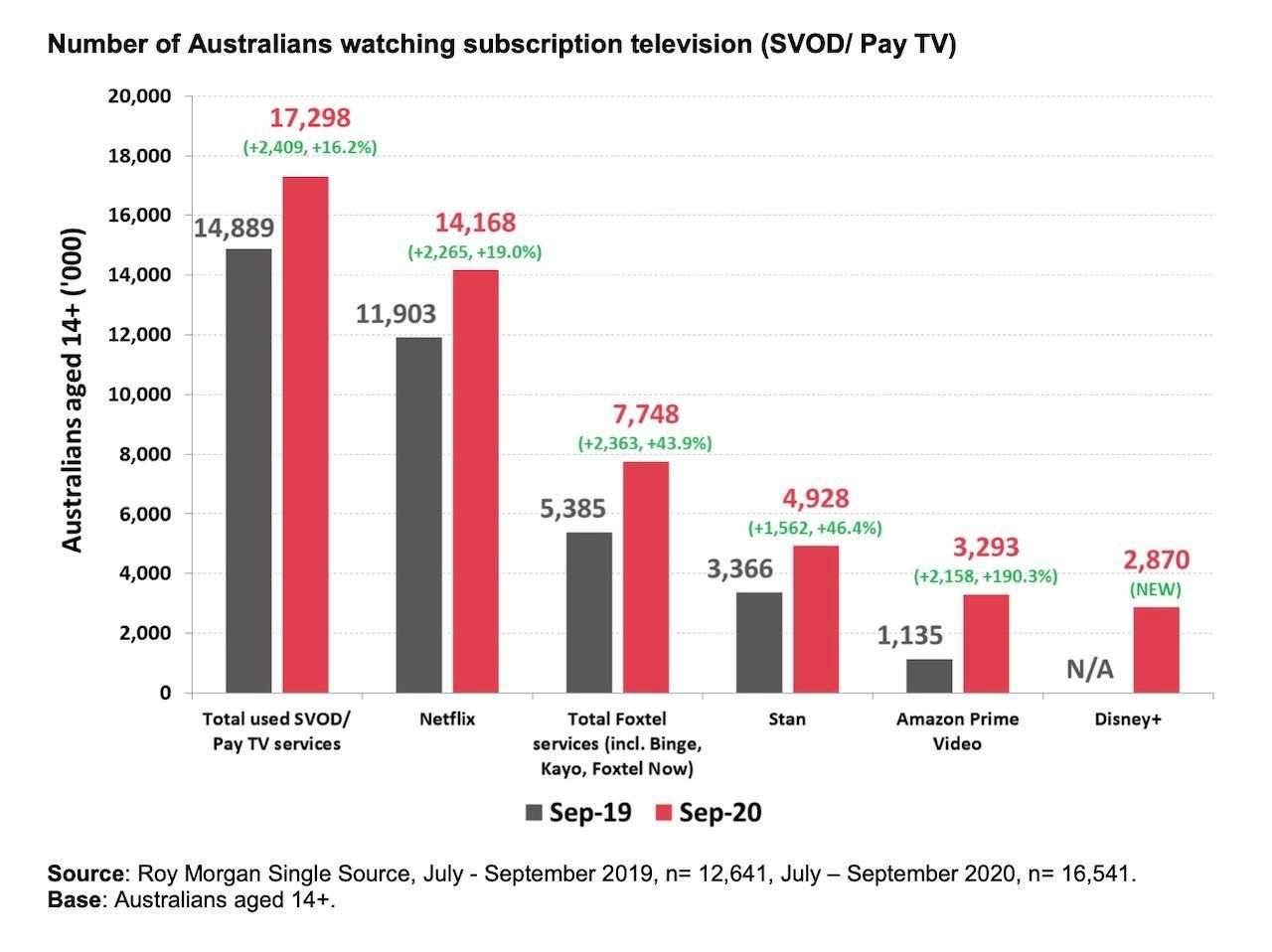Foxtel will eat itself
Binge. Kayo. Presto. Foxtel has a long history of internal fiefdoms actively hurting its efforts to grow new digital services.

Australian TV networks have always loved to keep their rivalries bitter. So it's never strange to see TV services fight tooth and nail for every eyeball.
But it's definitely weird when they're working for the same company.
Over the summer, Foxtel-the-cable-service has made moves against its own emerging Foxtel-the-streaming-service efforts, Binge and Kayo.
The big move? Ejecting Binge and Kayo, its streaming TV and streaming sport services, from its Foxtel Now set-top box.
Essentially, someone who runs Foxtel (the part of the business that still charges premium prices for a mega bundle of channels) decided that offering Binge and Kayo on the same device as Foxtel Now was a path to self-destruction. One fiefdom wasn't happy letting the upstart "cheaper" part of the business have a chance to steal customers from one department and move them to another.
The excuses were hilarious.
- The sport available through Kayo is also available as an add-on package for Foxtel Now subscribers at a "similar" price.
- Kayo and Binge are still available on other Android TV devices and people could always Chromecast to their TV from a phone or computer if they don't have one.
Think about that last one. The company is clearly stating that it is entirely a business choice to kick its own customers off a device they were already using and was controlled by the same company, not for any technical reason (it's an Android TV unit too) but just to make life harder for customers that were only choosing Binge and Kayo instead of Foxtel Now.
It boggles the mind. But it isn't the first time either.
Remember Presto? Foxtel's TV & movies service that ran from 2014 to 2016. It's where Mr Robot premiered in Australia. It was here a year before Netflix came down under.
It didn't work out.
What was clear as a journalist covering the product was a lack of commitment to the idea. And that's the eternal problem with Foxtel. Always trying to save features for its core product, whether it's HD or 4K or certain TV shows, it has treated itself as its harshest competitor. And then no doubt someone somewhere talks about how these digital services aren't delivering the numbers the business was hoping for.
It's like they want to see their own new products fail.
Meanwhile the wider world delivers all those features and more through Netflix or Stan or Amazon and customers make their choices based on the whole market, not based on which bit of Foxtel sticks its chest out the furthest.

Everybody grew in the pandemic, which is no surprise. According to Roy Morgan data, Foxtel grew from 5.4m to 7.7m in the year to September 2020. That number, however, includes Kayo and Binge as well as Foxtel – it doesn't like to split its numbers the way it likes to treat them as very separate internally.
Meanwhile, Netflix (14.4m) is way in front, while Stan is catching up (4.9m) – and Stan gets sport this year, which is a huge factor in Foxtel keeping up its exclusive audiences.
This is all so much like every other story about incumbent old services thinking digital will never really come and eat its lunch.
But Foxtel feels worse than usual. It's all about content on your screen – but it still can't grasp that the way the content gets there isn't important. It's only focused on the idea that it used to get $120/month from customers because it was the only game in town and now how could it possibly accept letting its own $20/month services beat its $50/month services…
If you lose it all, you get $0/month, Foxtel.
I asked former staffers who have seen these battles up close for their perspective.
"Foxtel has been a n00b in digital media clothing. A traditional company that has seen the competitive threat of services like Stan and Netflix, but at its core has not evolved its culture to recognise the opportunity these new business models and approaches offer."
"Foxtel would be happy continuing to update its box every other year and continuing to sell subscription TV packages rather than rethink its business for a new media landscape."
I asked for one word to sum up the experience was like watching Foxtel fight to hamstring its own digital services from taking off:
"Mad."
"Confused."
Colour me confused to.
Byteside Newsletter
Join the newsletter to receive the latest updates in your inbox.


